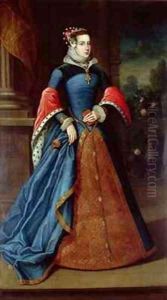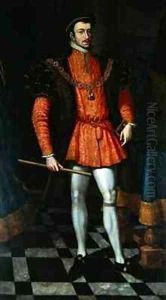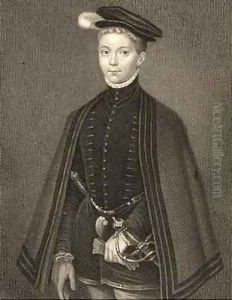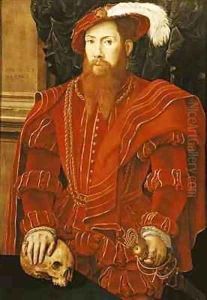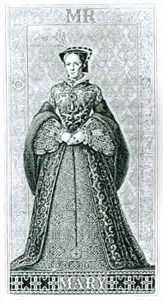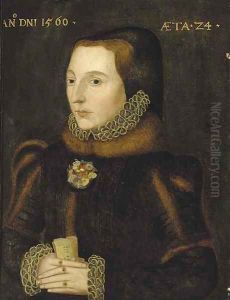Eworth or Ewoutsz, Hans Paintings
Hans Eworth or Ewoutsz was a Flemish artist born around 1520, known for his work as a portrait painter in Tudor England. His early life and training remain somewhat obscure, but it is believed he originated from Antwerp in the Habsburg Netherlands (present-day Belgium), which was a significant center for the arts in the 16th century. It is likely that he was trained in the rich artistic traditions of the Low Countries, which included the influence of prominent artists such as Quentin Matsys and later, Pieter Bruegel the Elder.
Eworth's presence in England is recorded from the mid-1540s. He likely moved there to escape religious persecution in the Spanish Netherlands or to seek new opportunities following the iconoclastic destruction that occurred during the Protestant Reformation. In England, he found a patronage network that was favorable to immigrant artists, as native English portraitists were relatively scarce at the time.
During his career in England, Eworth worked for the English court and produced portraits of several members of the aristocracy. He is best known for his portraits of Mary I of England, showing his mastery of depicting fabrics and jewels, and his ability to convey the status and personality of his sitters. His style is characterized by meticulous attention to detail, elegant handling of paint, and a clear influence from Holbein, another Northern European artist who had success at the English court. Some of Eworth's known works include 'Mary I' (1554), 'Sir Thomas Wyatt' (1540s), and 'Lady Dacre' (1555-1558).
Despite his apparent success, little is known about Eworth's personal life or training. There are no surviving works signed by him, but several paintings have been attributed to him based on stylistic analysis and the distinct monogram 'HE' that appears on some of his works. Eworth's last documented work dates from 1570, and he is believed to have died in 1574. While not as famous as some of his contemporaries, Eworth's contribution to Tudor portraiture provides valuable insight into the cultural and social milieu of 16th-century England. His works are held in various collections, including the National Portrait Gallery in London.
